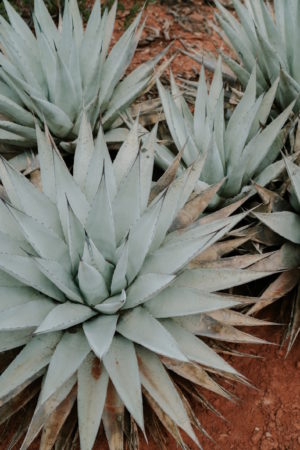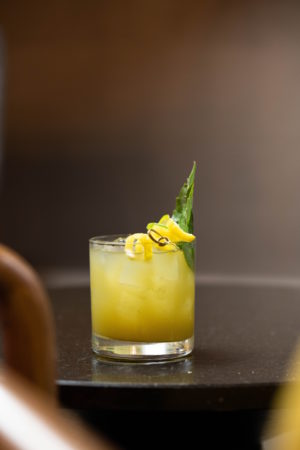Breaking down the humble and beloved margarita (Charleston City Paper)

Much like a night spent consuming them, the origins of the margarita are a little bit hazy.
On the one hand, Carlos “Danny” Herrera claims to have invented the drink in 1938, when a picky customer came into his Tijuana restaurant wanting a mixed drink made with tequila. Add to him the handful of bartenders claiming to have created the cocktail in honor of beautiful women named Margarita. If that’s not enough, Dallas socialite Margarita Sames took it a step further, insisting that she first concocted the drink in 1948, while vacationing with friends. As luck would have it, one of her travel companions was hotelier Tommy Hilton, who later put it on his menu.
Be that what it may, the least-colorful explanation may also be the most factual. In 1945, tequila maker Jose Cuervo began running an ad campaign with the tagline, “Margarita: It’s more than a girl’s name.” This slogan, along with the straightforward recipe, has led to speculation that a margarita is actually just a daisy in agave clothing.
Popular during Prohibition, a daisy (not-so-coincidentally, the word for “margarita” in English) utilizes the same ingredients with brandy in place of tequila. The formula is seemingly a familiar one; substitute rum, and you have a daiquiri. Swap in cognac, and it’s a sidecar. Grab a bottle of cachaca, and you’ve got a caipirinha.
Regardless of backstory, when considering the perfect margarita, what matters most is spot-on preparation. But in a world of blended, fruity, spicy, and skinny variations, what does that even mean anymore?

“In my opinion, you have to start with good tequila,” says Morgan Hurley, marketing and beverage director for Mex 1 Coastal Cantina and two-time (2017 and 2018) winner of the Charleston Margarita Festival. “100 percent blue agave tequila is a must, and I personally prefer sustainable brands.
“In addition to the alcohol, it’s about balancing some sort of acidity, like lime or other citrus, and some sort of good sweetener like agave, simple syrup, or honey. Along with orange liqueur, I think using seasonal ingredients is what takes it to the next level. These are things like watermelon, peaches, and hibiscus in the summer, or pomegranates, blood oranges, and hot peppers in cooler months.
“Personally, I think salt is a necessity in the sense that it can dampen down some sweetness and bring out subtle flavors that weren’t there before,” continues Hurley. “You want at least a half-salt rim. A perfect margarita — even a skinny margarita — shouldn’t be overly sweet or overly sour, you want some balance on your palate.”
The folks behind the bar at Sol Southwest Kitchen and Tequila Bar, runner-up in the 2018 Margarita Festival competition, echoed similar, if simpler sentiments. “For a perfect margarita, one should only use 100 percent Blue Agave Tequila and fresh juice.”
While Sol’s popular 2018 entry was a fresh blueberry margarita prepared with just-squeezed lime juice and crisp basil leaves, their plans for this year are “top secret, but always fresh and delicious.”
With two wins under their belt, Mex 1’s Hurley is less cagey, noting they’ll once again serve their Baja Tanga, the 2017 Margarita festival winner. Made with tequila, watermelon, rosé, lime juice, and agave, Hurley concedes, “It’s a popularity contest, and once I start saying ‘tequila, watermelon and rosé…’ Well, you can imagine. But at the same time, and even though I’d really love to win for a third year in a row, I know that the contest isn’t going to be as strong if we keep winning every year. Maybe, in that case, I’ll become a judge.”
With a core recipe based in relatively simple ingredients, the margarita is now available in countless forms. Modern times have brought the spicy margarita, the skinny margarita, and margaritas containing more or less every kind of fruit — not to mention herb and/or chili pepper — on the planet. With so much variance, it’s notable that spokespeople for both Sol and Mex 1 are on the same page as to where the future of this classic cocktail might lead.
“I think consumers are more conscious and aware than ever with respect to what they are eating and drinking,” says a spokesperson for Sol. “They care about where the ingredients come from and how they are prepared, and cocktails will continue to follow the same path as food has. Increasingly, people want to know, ‘Where does the alcohol I’m drinking come from?’ or ‘What ingredients are in my cocktail?’ and that’s an important trend — accountability. I also think mezcal will continue to appear on more and more cocktail menus, as well as being introduced to cocktails that combine tequila with other spirits.”
Mex 1’s Hurley agrees, “I think consumers are having real conversations with the brands, and things are now much more about sustainability and quality. I feel that we’re seeing a more educated and in-tune consumer who wants to support the tequila producers that are doing it right. I think it breaks down in two ways: Utilizing more locally sourced ingredients that reflect the seasonality of what you’re trying to do, as well as supporting the brands that are creating a more sustainable climate for the future.”
Whether you prefer salt, spice, strawberries or sustainability, margaritas are here to stay. While it’s anyone’s guess who might win this year’s Margarita Festival contest, the efforts are sure to be outstanding, and a touch haze-inducing. Keep calm and sip responsibly but should all else fail, there’s always the timeless advice of singer/songwriter, restaurateur, and margarita advocate, Jimmy Buffett: “If life gives you limes, make margaritas.”






